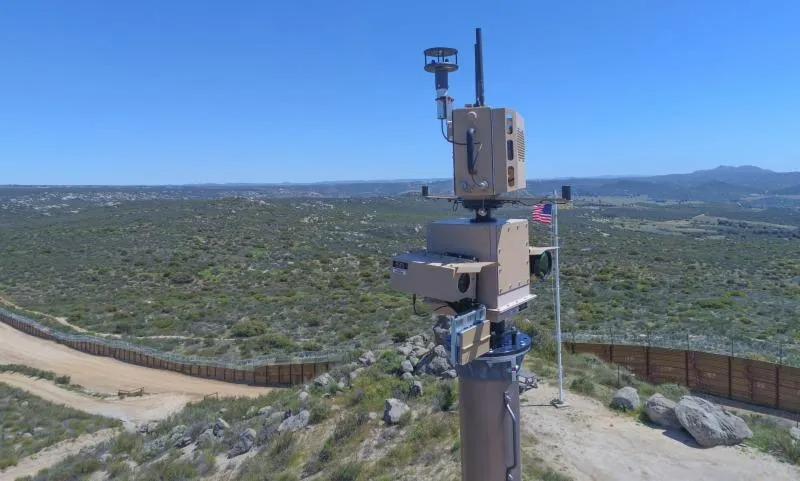Border Monitoring and Surveillance System: Enhancing National Security

Border monitoring and surveillance systems play an essential role in strengthening a country’s national security. By deploying advanced technologies, these systems allow for real-time monitoring, intrusion detection, and rapid response capabilities along international borders. As global security concerns grow, investing in robust border surveillance systems has become critical to protect borders from unauthorized entries, smuggling, human trafficking, and other illegal activities. This guide explores the key components, types of surveillance technologies, and the benefits of implementing an effective border monitoring and surveillance system.
1. Core Components of Border Monitoring and Surveillance Systems
A. Surveillance Cameras
High-resolution cameras equipped with night vision and infrared capabilities are vital for continuous border monitoring. These cameras can detect movement across vast distances, offering real-time footage to security personnel. With the help of pan, tilt, and zoom features, operators can focus on specific areas and track suspicious activities.
B. Radar Systems
Radars are indispensable for detecting unauthorized movement over large border areas, especially in low-visibility conditions such as heavy fog, rain, or nighttime. Radars can detect individuals and vehicles over considerable distances, providing a critical layer of security where visual surveillance may be limited.
C. Drones and UAVs (Unmanned Aerial Vehicles)
Drones offer unparalleled flexibility in border surveillance, covering remote or hard-to-reach areas. Equipped with thermal imaging and live-feed transmission capabilities, drones can detect movement across vast terrains, including rugged and uneven landscapes. UAVs also serve as a rapid-response tool, enabling quick action in emergency situations.
D. Ground Sensors
Ground sensors detect vibrations, movement, and other disturbances in specific areas. Often buried or camouflaged, these sensors are especially useful for monitoring unmanned or remote parts of a border. They provide real-time alerts to a central control system if unusual activity is detected.
E. Satellite Surveillance
Satellites offer a wide coverage area, making them ideal for continuous surveillance over large or difficult-to-access border zones. Satellite monitoring provides high-resolution images and thermal readings, enabling border security teams to monitor activities across different landscapes.
F. Communication and Command Centers
Central command centers are essential for managing data and coordinating responses. These centers integrate information from all surveillance components and use advanced analytics to prioritize alerts, communicate with field personnel, and make strategic decisions in real time.
2. Types of Surveillance Technologies in Border Monitoring
A. Thermal Imaging
Thermal imaging technology is vital for detecting people and vehicles by their heat signatures, especially at night or in low-light conditions. It’s commonly used in cameras and UAVs, providing clear visibility even in total darkness.
B. Facial Recognition and Biometrics
In high-security areas, facial recognition systems help identify individuals attempting unauthorized entry. Combined with biometric databases, facial recognition helps border agencies identify and track individuals across border checkpoints, strengthening access control.
C. Artificial Intelligence (AI) and Machine Learning
AI-driven analytics play a crucial role in border monitoring by analyzing data from multiple sources to identify potential threats. AI helps automate threat detection and pattern recognition, allowing for faster, more accurate decision-making and reducing the burden on human operators.
D. Automated License Plate Recognition (ALPR)
ALPR systems help monitor vehicles crossing borders, detecting and logging license plates automatically. These systems flag suspicious or unauthorized vehicles, aiding in the identification and tracking of criminal activities such as smuggling.
E. Smart Fencing and Virtual Barriers
Smart fencing integrates sensors, cameras, and ground-based surveillance to create a virtual barrier along borders. These barriers trigger real-time alerts to command centers upon detecting movement, providing security in areas where physical barriers might be challenging to construct.
3. Benefits of Implementing Border Monitoring and Surveillance Systems
A. Enhanced Security and Threat Detection
The primary benefit of border surveillance systems is improved threat detection and response. By integrating multiple surveillance tools, these systems allow security forces to detect and address potential breaches before they escalate into serious threats.
B. Increased Efficiency and Cost Savings
Automating border surveillance reduces the need for constant manual monitoring. Technologies like AI, drones, and radars optimize resources, allowing border patrol agencies to allocate manpower more efficiently and cover larger areas at a lower cost.
C. Faster Response Times
With real-time data feeds and alerts, surveillance systems enable rapid response to incidents. Ground personnel can be dispatched to a breach site immediately, minimizing the risk of infiltration or other criminal activity.
D. Comprehensive Data Collection and Analysis
Border monitoring systems collect valuable data over time, which can be used to improve border security strategies. Analysis of historical data helps predict activity patterns and inform future security measures, enhancing overall security effectiveness.
E. Improved Resource Allocation
By analyzing data and identifying high-risk areas, security agencies can allocate resources more effectively. Automated surveillance systems allow personnel to focus on high-priority tasks and respond to specific threats as they arise.
4. Challenges in Border Surveillance and Solutions
A. Harsh Terrain and Weather Conditions
Borders often cover varied and challenging terrains, which can hinder surveillance efforts. Solutions such as drones, all-weather radar systems, and ground sensors help mitigate these challenges, ensuring coverage across diverse environments.
B. Privacy Concerns
Surveillance systems must comply with privacy regulations to protect citizens’ rights. Implementing measures such as anonymizing data and restricting access to authorized personnel helps address privacy concerns.
C. Cybersecurity Threats
As border surveillance systems become more data-driven, they face increasing risks from cyber threats. Employing robust cybersecurity protocols, regular system updates, and data encryption can help secure border systems against hacking attempts.
5. Future Trends in Border Surveillance
A. Integration with Smart Cities and IoT
Smart city infrastructure and IoT (Internet of Things) devices are likely to play a larger role in border security. Integrating border surveillance with smart city technologies could enhance situational awareness and improve response capabilities.
B. Increased Use of AI and Automation
As AI continues to evolve, its applications in border security will expand. Future AI systems may perform predictive analysis, identify high-risk areas based on historical data, and automatically prioritize security alerts.
C. 5G Connectivity for Real-Time Monitoring
The rollout of 5G networks will significantly enhance data transmission speed, improving real-time monitoring and communication between devices. Faster connectivity will help streamline border monitoring, enabling quicker response times and more reliable communication.
Conclusion
An effective border monitoring and surveillance system is essential for modern security frameworks. By integrating advanced technologies such as AI, thermal imaging, and satellite surveillance, these systems provide comprehensive protection against unauthorized entry, smuggling, and other security threats. As technology continues to advance, border surveillance systems will become even more efficient, enhancing a nation’s ability to protect its borders and safeguard its citizens.







